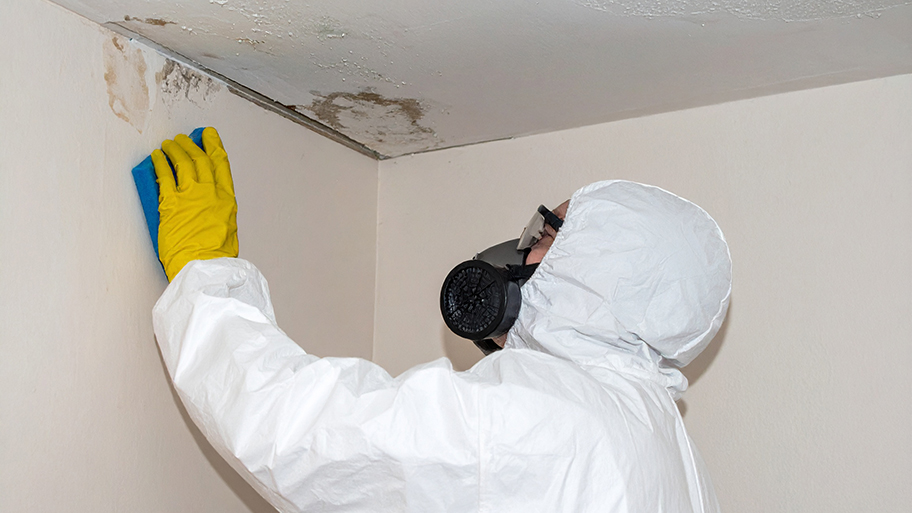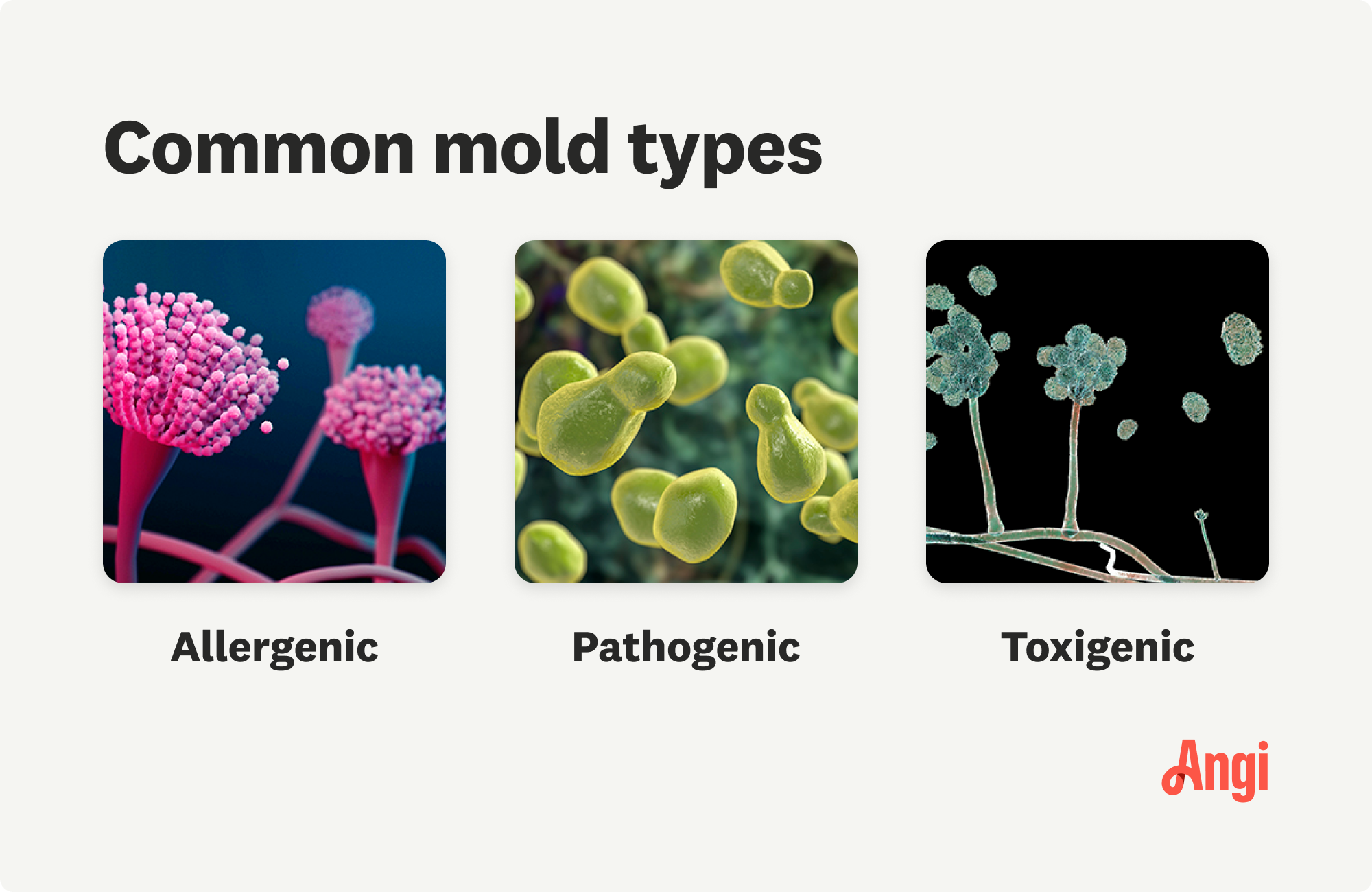
Mold remediation cost can quickly escalate. But if you have mold in your home, the cost for mold remediation is worth it.
Say goodbye—your vinyl most likely won’t survive this


Mold grows quickly under vinyl flooring, as it’s a perfect habitat.
Prevention mainly involves constant humidity monitoring and ventilation.
Almost all mold carries health risks.
Call a professional if you discover any mold. Don’t risk it.
If your house smells musty, or you notice discoloration on your flooring, you may have mold under your vinyl flooring. Mold seldom remains hidden for long, so if you see mold creeping up from under your vinyl flooring–you’re probably looking at a much bigger problem. Mold is extremely toxic, so professional testing and removal is almost always required.
People are terrified of discovering mold, and for good reason. Once it takes hold it can spread rapidly, causing serious health complications (especially for those with compromised immune systems), and can wreak havoc on the structural parts of your house.
When it comes to vinyl flooring, the minute you discover mold underneath it, that flooring is now garbage. Mold is stubborn and can grow from even the tiniest spore. Anything relatively cheap—like vinyl flooring—that is infected with mold should be discarded appropriately, as soon as possible. If you’re wondering whether or not you need a mold inspection, the answer is a resounding yes.

There are many types of mold and, unsurprisingly, none of them are good for you. Black mold is one of the more common varieties, and is one of the most toxic. Mold poisoning symptoms include, but are not limited to:
Shortness of breath
Brain fog
Respiratory distress, such as a persistent cough or phlegm
Migraine
Runny or stuffy nose
Eye and skin irritation
Fatigue.
Gastrointestinal (GI) issues
If you experience any of these issues, and notice mold–either from sight or smell–visit a doctor immediately. In more serious cases, consider a hospital visit. These issues can develop very suddenly, or they could build over time.
Mold has a corrosive effect on the surfaces it inhabits. Mold feeds on moisture, and while you may think your wooden cabinets or vinyl flooring is dry, there is enough moisture present for mold to grow. This is especially true for vinyl flooring, which has a tendency to “gap” between the flooring and the base floor it’s placed on.
Once the mold spreads, that’s an easy write-off for your vinyl flooring. However, it can also damage the underlying structure. Vinyl flooring is commonly placed over old hardwood, and mold will, over time, eat through the wood.
Ideally, you will find this problem early, but vinyl flooring does a good job of masking mold growth. Mold is like cockroaches—if you see any signs or even one, it’s safe to assume there’s more.
Mold flourishes under vinyl flooring because it isn’t breathable, which leads to trapped moisture. The vinyl material acts as an impenetrable barrier that keeps moisture in place, creating the perfect breeding ground for mold growth. This is particularly true if the subfloor under the vinyl doesn’t have a proper moisture barrier.
Moisture can get under the vinyl flooring due to improper installation, water spills, leaks, or high humidity throughout the home.

Mold smells. If you notice a musty smell in a room with vinyl flooring, that’s a dead giveaway that there’s growth under the flooring. While this isn’t good news, vinyl is easy to check under and rarely requires more than lifting a corner to check. Mold can also smell earthy (like mushrooms) or like rotting or decaying wood.
If you can smell the odor and you can’t see it, usually that is a sign of something more serious. Mold can hide behind your walls and floors and will require a professional mold remediation company to run indoor air quality tests.
There are a few signs mold is growing underneath your vinyl. Unfortunately, once you notice these signs, it means there is already a good amount of mold underneath. The only sign where this isn’t the case is when there are mold lines along the edge of the vinyl, as the mold may simply be growing in the space between the flooring and the wall.
Other visible clues that—probably—indicate mold growth under your vinyl are:
Irregular bumps in the surface
Dark, splotchy patches that don’t clean off
A border of mold along the edge of the vinyl
Mold growing on the wall directly above the flooring
Seams opening
Adhesive deteriorating
If the damage under your vinyl flooring was simply water damage, replacing it would be much easier. However, because you’re dealing with a toxic agent, you’ll need to call a mold inspector near you.
Replacing and repairing should be done by a pro. Separating replacement and repair is a bit of a misnomer because, usually, they are one and the same. You can’t really repair vinyl flooring once it’s been tainted by mold, and it will need to be removed in its entirety.
Professional mold removal costs between $1,100 and $3,300. This may seem high, but remember it isn’t just your floor that’s at risk—your health is far more important than saving a few bucks.
Preventing mold growth under your vinyl flooring isn’t as easy as preventing it from growing, say, under a kitchen cabinet. Mold needs moisture to grow, and it’s much harder to control moisture between two layers of flooring.
Your best bet would be to keep the humidity as close to 30% in your house as you can, and not higher. The reason for this is that mold likes to grow at humidity levels over 50%. Dehumidifiers and regular room ventilation are the two most powerful ways to prevent mold under your vinyl.
Other than preventative measures, react to any water issues immediately. Leaky pipes, water coming in through gaps, and any other water spills or pools need to be fixed as soon as you see them. A final step would be to conduct periodic mold inspections with a pro.
Mayflower was an excellent choice for the complete renovation of my condominium. They knew exactly how to deal with the complexities of the condo building and management to make the project very smooth, easy and done right. From start to finish, everyone was incredibly helpful and their...
He requested I review his service, so I am following through. This week was the second service. I told him that our particular needs were that the trash cans in the living room, kitchen, and my bedroom be emptied. I explained what should go in recycling and which should go in garbage bin...
Tony was very professional and personable. He explained the damage he saw and reassured me the work to be performed. On the day of the visit he was punctual, courteous and exceeded my expectations while sharing information.
Exceptional quality of work, customer satisfaction oriented. I wanted to do interior work and was so impressed I asked for shingle roof and siding work on my home also, which came out very great. Any questions and concerns, Galaxy contractor answered my questions. Thank you guys.
Alex and his crew are great! I contracted them to move my dad and they went above and beyond!
My experience with this company did not start off 5 stars, but it certainly ended that way. Sam reached out to me and showed me that All Complete Construction does care about their customers. He listened to my complaints, understood my frustration, and went above and beyond to make it right....
Excellent sales staff and installer. Easy to work with. I appreciated that my current system was able to be activated and used.
I needed a kitchen and bathroom remodeling and these guys were the best people I could choose. They took my vision and brought it to life! Amazing customer service.
From average costs to expert advice, get all the answers you need to get your job done.

Mold remediation cost can quickly escalate. But if you have mold in your home, the cost for mold remediation is worth it.

The cost of a mold inspection might seem high, but it’s one of the best investments you can make for your health and home. Read on to learn cost-saving tips.

Mold is a serious health hazard and, unfortunately, difficult to detect in your home. Use this guide to help determine if hidden mold is making you sick.

Learning how to remove mold from wood furniture is a worthwhile DIY project because you can save your expensive wood pieces. Learn more about safely removing mold from wood furniture.

Figuring out how to test for mold in your home is important. Mold testing can offer peace of mind and lets you know if it’s time to call a pro. Learn about mold testing processes in this guide.

Where there's moisture, there's likely to be mold. Read on for tips on how to prevent mold growth in all areas of your home.